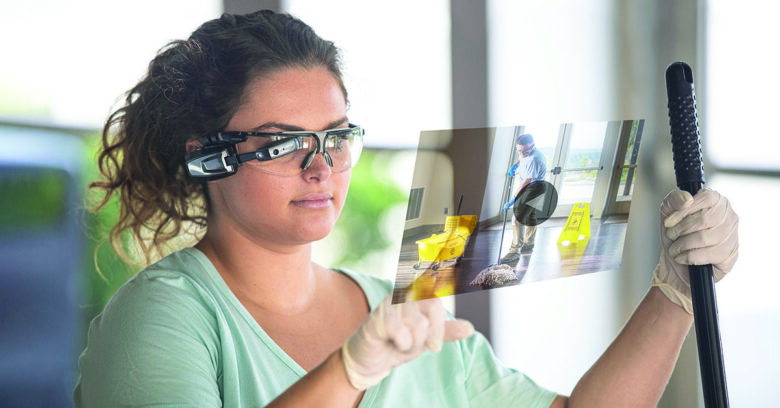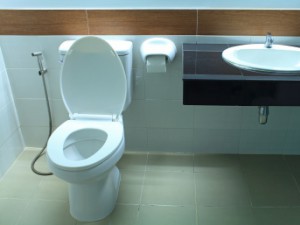
For the past 20 years, the industrial manufacturing industry has implemented automation and robotics in its facilities to increase efficiencies and overcome labour issues, product inconsistencies, and profitability challenges in the face of competition.
The commercial cleaning industry is at the start of its hike, and the path looks very promising to implement millions of robots worldwide. The real question is … are you ready?
According to a recent ISSA webcast that explored the role of robotics in our industry, we will see three million robots deployed globally over the next 10 years. As we discuss robotics with our members and industry professionals, we need to embrace technology and adapt our business operations to take advantage of the opportunities that come with this innovation. It is time to get into the growth mindset and stop being complacent.
There is a growing trend where students can earn their college degrees exclusively online. This trend will continue and drive demand for more online vocational learning experiences. However, with many trades, it is essential to understand that a skilled worker will not succeed only by taking online courses.
An authentic blended learning and assessment process for workers will drive real change and impact the bottom line for any organisation. To help us think about why we need a blended learning approach, we have nearly 40 million cleaning workers globally with many backgrounds, languages, and resource accessibility. Over 40 percent of these workers have changed jobs in the last year, with professional development opportunities being their top workplace incentive.
Over the years, you may have read many articles promoting a blended learning approach for adults, primarily focusing on kinaesthetic and hands-on learning. As we continue to engage our workforce with technology, online learning platforms have become a primary source of employee education. Thinking about how technology impacts education and certification, here are a few tips to help you become future-ready.
TIP 1: TAKE ADVANTAGE OF DIGITAL LEARNING
As a word of caution, not everything you read online is true. This may seem obvious, but many individuals use social media apps before asking professionals. While technology has wonderful intent, we must know what is true. Research your answers from credible sources. Digital learning will continue to grow and will soon implement virtual reality (VR) and augmented reality
(AR).
When an organisation reduces its operational budget, it often cuts training first. Considering the cost of training and education, how can you become more cost-effective when you have a geographically diverse audience? Leveraging online learning and VR can create a real-life learning experience without needing a trainer on-site.
In addition to cost-effectiveness, VR can enhance training safety. VR is one of the best ways to reduce liability when training staff on the complexity of using hazardous chemicals and tools safely. In addition, leveraging robots to do daily, time-consuming tasks will allow workers to train via VR to tackle more complex tasks.
TIP 2: MEASURE YOUR RESULTS
The famous management consultant Peter Drucker once said, “You can’t manage what you don’t measure.” Online learning platforms collect the data necessary to measure someone’s success and path. As companies identify how they can work together, some combine quality cleanliness scores with required learning paths based on the deficiency trends in the quality audit phase. With the cleaning industry’s high turnover rate, online learning can effectively drive learning and decrease employee turnover while offering a low-cost training option.
Leveraging other data sources, such as quality assurance applications, worker injury reports, or absenteeism rates will help drive forward the educational needs of the workforce. It’s time to begin measuring workplace culture as a key performance indicator of the training impact. Younger generations demand mission-driven organisations with powerful recognition programs.
TIP 3: USE DATA TO CUSTOMISE EDUCATION
Data collection can significantly impact education and certification. For example, numerous sales assessment tools can provide accurate data on the “DNA” of a salesperson. Once the assessment is complete, we can identify the gaps within the individual’s capabilities to become more successful. As the data flows, we can create a micro-learning environment tailored to that individual’s needs.
Imagine that your assessment reveals you need to gain skills in closing sales. Based on this identification, you would undergo training to maximise your potential and overcome your gaps. Undergoing certification is another way to leverage data and confirm you understand the fundamentals of your learning.
TIP 4: USE A BLENDED LEARNING APPROACH
Learners typically retain 50 percent of what they were just taught after an hour. However, it is said that an individual will keep closer to 80 to 90 percent if they teach the information they learned to someone else.
Soon, VR and AR will close a gap in the learning process and help overcome the obstacle of lowered learner retention numbers becoming the norm as younger professionals with a digital approach
to life enter the workforce. Utilising VR learning, employees will watch a short video and then be prompted to perform the task they just learned with a headset and sensors tracking their motions.
With the transition in motion today for tomorrow’s future-learners, remember that VR will not be the only learning mechanism. Implement a blended approach with frequent, short learning sessions for your employees. As people do not learn the same way, blending classroom-led and performance-based training with online learning and other new teaching methods, such as VR, is essential. When building your learning experience, remember to create a blended approach that engages the learner at a deeper level.
LEARN FROM OTHERS
We need to acknowledge how other industries, such as manufacturing, have implemented automation and learn from the challenges they faced training their teams. The automation acceptance phase took time for companies to overcome as employees initially viewed robotics as their replacement rather than a tool to enhance their output. Remember, people will support what they helped to create. ■
Article by Brant Insero. Brant is ISSA’s chief global education officer. With nearly 20 years of professional training experience, he has instructed industry professionals within commercial cleaning, supply chain, telecommunications, retail, and financial vertical markets. For more information, visit issa.com.
Photo: Courtesy of Midlab.
Comment below to have your say on this story.
If you have a news story or tip-off, get in touch at editor@incleanmag.com.au
Sign up to INCLEAN’s newsletter.




